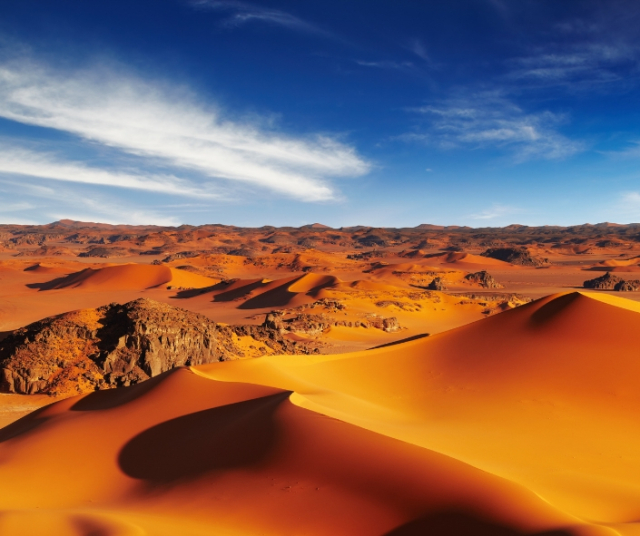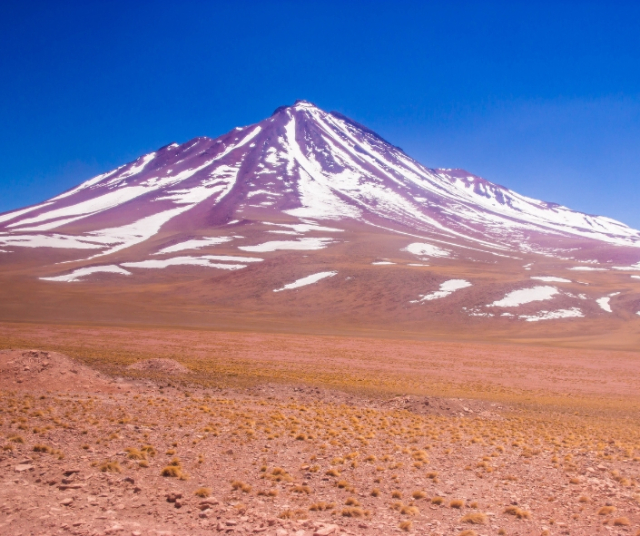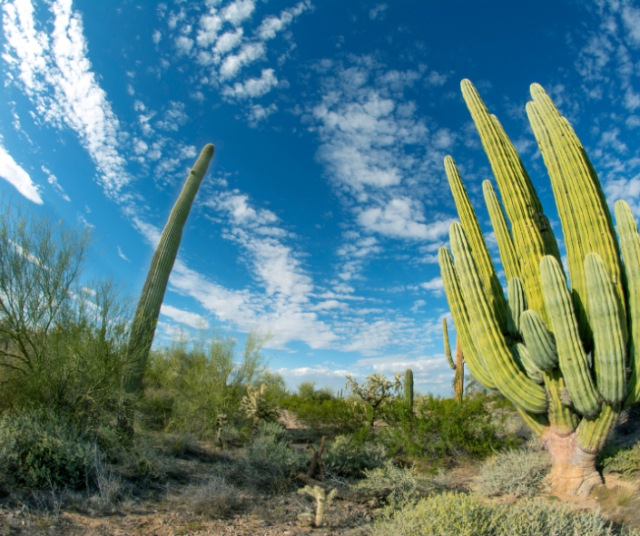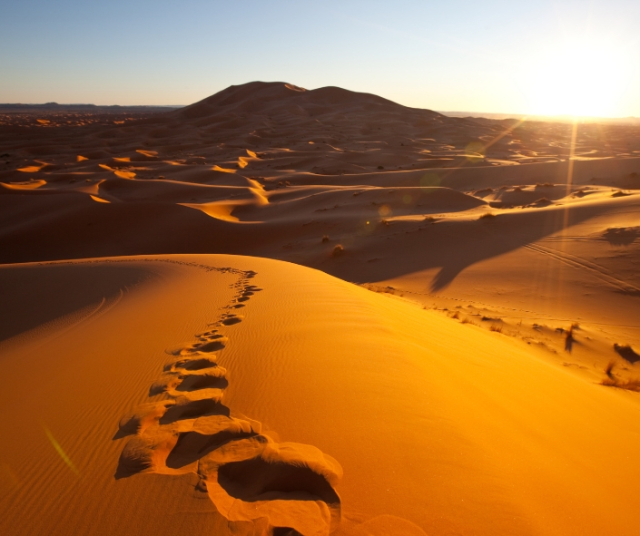Deserts, vast expanses of arid, sparsely populated land, represent some of the most inhospitable and fascinating environments on our planet. From the scorching dunes of the Sahara to the frozen landscapes of Antarctica, deserts encompass a diversity of climates, geographies and ecosystems.
Definition and General Characteristics of Deserts
Deserts are primarily defined by their low annual rainfall, which is generally less than 250 millimeters. This lack of water is what makes deserts inhospitable to most life forms, although surprisingly, many are far from barren deserts. Deserts can be found on all continents, from the arid regions of Africa and Asia to the vast desolate landscapes of North and South America, as well as in the polar regions.
Among the most notable characteristics of deserts are high temperature fluctuations, with scorching days and freezing nights, as well as a lack of vegetation. Flora and fauna adapted to these extreme conditions often exhibit a surprising ability to survive with little water and in extreme climates.
Main Deserts of the World
Sahara

The Sahara, located in North Africa, is the largest hot desert in the world. With an area of more than 9 million square kilometers, it covers a large part of the African continent. The sand dunes of the Sahara, together with its vast rocky plains, create impressive and life-challenging landscapes.
Gobi Desert

Located in Central Asia, the Gobi Desert is known for its climatic extremes, with hot summers and extremely cold winters. Despite these harsh conditions, the Gobi is home to a surprising diversity of life, including two-humped camels and snow leopards.
Atacama Desert

Located on the western coast of South America, the Atacama Desert is one of the driest deserts in the world. Its lunar landscape and lack of precipitation make it one of the most inhospitable places on Earth, but despite this, the desert is home to a unique variety of flora and fauna adapted to extreme aridity.
Mojave Desert

In North America, the Mojave Desert extends across southern California, Nevada, Utah and Arizona. Known for its high temperatures and vast desert landscapes, the Mojave is home to rich biodiversity, including adapted species such as the Joshua Tree cactus and the desert tortoise.
Kalahari Desert

Located in southern Africa, the Kalahari encompasses parts of Botswana, Namibia and South Africa. Despite its name, the Kalahari is not a desert in the traditional sense, receiving more precipitation than other deserts, but it is still an arid and challenging environment that is home to a surprising diversity of life, including large African mammals such as the lions, cheetahs and elephants.
Ecological Importance of Deserts
Although often perceived as desolate and barren places, deserts play a crucial role in global ecological balance. These unique ecosystems are home to a variety of species adapted to extreme conditions, many of which are found nowhere else in the world.
Deserts also play an important role in the water cycle and global climate. The lack of vegetation in deserts means that less water is retained in the soil, which can lead to greater runoff and recharge of aquifers in other areas. Additionally, deserts help regulate global climate by influencing Earth's albedo and atmospheric circulation patterns.
Challenges and Threats to Deserts
Despite their ecological importance, deserts around the world face a number of challenges and threats, many of which are the result of human activity. Desertification, mainly caused by overgrazing, deforestation and climate change, is a serious problem in many desert regions, leading to the loss of fertile soil and the degradation of ecosystems.
Excessive groundwater extraction is also a common problem in deserts, which can lead to declining water levels and the destruction of critical aquatic habitats. Furthermore, urbanization and agricultural expansion in desert areas can lead to habitat fragmentation and loss of biodiversity.
Conservation and Management of Deserts
Desert conservation is essential to ensure the survival of these unique ecosystems and the biodiversity they host. This requires a comprehensive approach that addresses both the underlying causes of desert degradation and the direct protection of critical areas.
Conservation strategies may include measures such as promoting sustainable agricultural practices, creating protected areas, and proper management of water resources. Furthermore, it is crucial to involve local communities in the management of natural resources and raise awareness about the importance of deserts for human well-being and the health of the planet.
It is crucial to establish protected areas and promote research and education on the importance of deserts for global ecological balance. By raising public awareness of the beauty and importance of these environments, we can inspire people around the world to take action to protect them.
Ultimately, desert conservation is not only vital to the survival of wildlife and the unique ecosystems they support, but is also critical to the health and well-being of humanity as a whole. By protecting and preserving these arid and fascinating landscapes, we can ensure a more sustainable and balanced future for generations to come.
